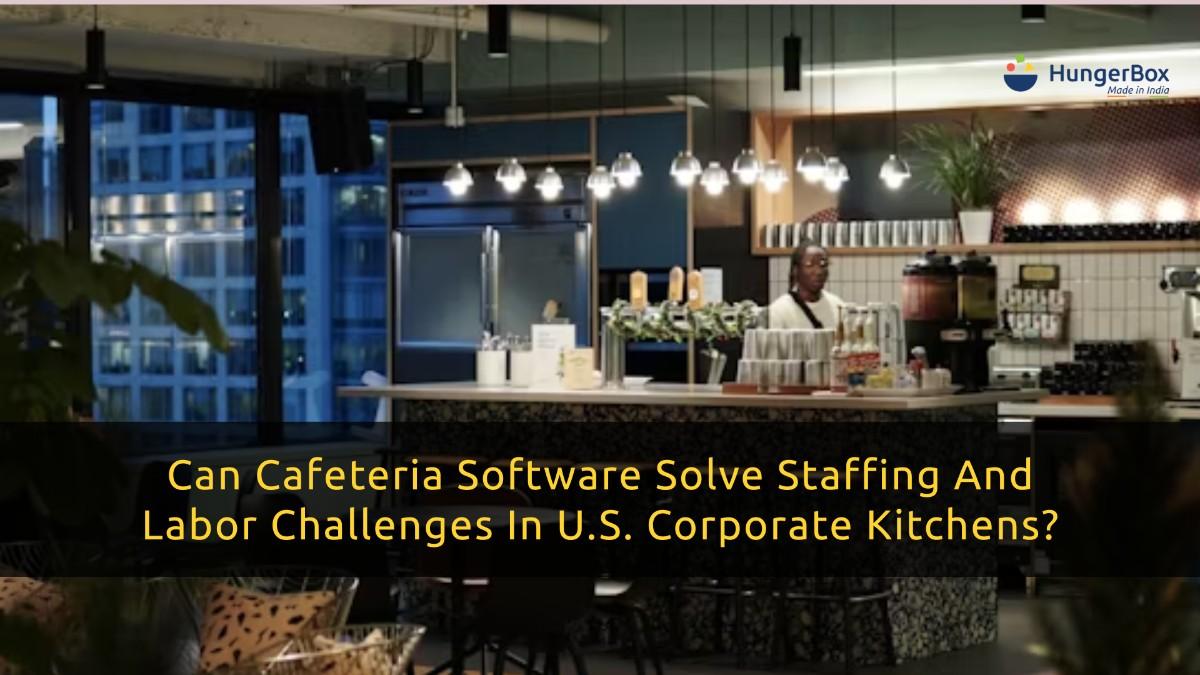
Can Cafeteria Software Solve Staffing and Labor Challenges in U.S. Corporate Kitchens?
Cafeteria operations in corporate America are under pressure. From rising labor costs to staffing shortages and unpredictable footfall, U.S. workplace kitchens are grappling with inefficiency. Fortunately, Cafeteria Software is emerging as a scalable solution that addresses these issues head-on.
With intelligent automation, predictive staffing, and integrated vendor coordination, Cafeteria Software allows organizations to modernize food service without compromising quality. As hybrid work models disrupt traditional cafeteria staffing, this technology offers real-time adaptability that’s transforming how Fortune 500 kitchens operate.
Explore Cafeteria Software by HungerBox to see how digital dining is reshaping modern kitchens.
Understanding Labor Challenges in U.S. Corporate Cafeterias
Reduced Footfall and Irregular Schedules
The shift to hybrid work has made it difficult to predict how many employees will dine on a given day. As a result, staffing plans based on headcount or fixed schedules lead to overstaffing or staff shortages.
High Attrition and Training Costs
Cafeteria staff turnover in the U.S. is high. Constant retraining, onboarding, and low employee engagement increase operational burdens. Traditional systems don’t provide data insights to manage these fluctuations efficiently.
Compliance and Safety Requirements
U.S. labor laws, OSHA regulations, and food handling protocols require robust scheduling, record-keeping, and process visibility. Manual systems fall short of providing the compliance metrics needed to pass audits or adapt quickly to changing health policies.
How Cafeteria Software Addresses Staffing Issues
Cafeteria Software offers intelligent tools that can ease staffing bottlenecks. Here’s how it helps:
Smart Demand Forecasting uses AI models that analyze attendance, meeting room bookings, and cafeteria data to predict daily diner volumes. Slot-Based Ordering reduces the need for large service teams by evenly distributing diners across meal slots. Integrated Vendor Management streamlines coordination with caterers or third-party vendors, reducing manual oversight. Staff Performance Dashboard allow facility managers to monitor service time, feedback, and efficiency across shifts.
Optimizing Manpower Allocation Through Cafeteria Software
Facilities using Cafeteria Software report major improvements in labor efficiency. By forecasting footfall and pre-booking meals, managers can deploy only the necessary number of chefs, servers, and cleaners. This prevents burnout, cuts overtime costs, and improves service quality.
Additionally, central kitchens benefit from the data aggregation provided by Cafeteria Software. If multiple offices are using a single food prep facility, digital systems ensure just-in-time delivery without excess staff deployment.
To experience this feature, Contact HungerBox.
Cafeteria Software and Automation: The Future of Kitchen Efficiency
Automation doesn’t mean replacing staff—it means empowering lean teams to perform better. Cafeteria Software supports contactless menus, digital billing, pre-configured meal prep schedules, and centralized feedback systems. By eliminating repetitive manual work, teams can focus on food quality and hygiene. This also reduces the stress and mental load of peak-hour rushes.
The future of labor management in corporate kitchens will revolve around data-driven decision-making. Cafeteria Software not only improves operational output but also helps build a resilient workforce that can flex and adapt to unpredictable work trends. This flexibility is key in a landscape where employee attendance can vary daily.
The demand for real-time responsiveness in today’s food service environment is only increasing. Companies are recognizing the limitations of manual scheduling and rigid cafeteria routines. Cafeteria Software equips facilities with the agility to match labor force deployment with actual diner demand, preventing wasteful overstaffing and suboptimal service.
Beyond operational efficiency, Cafeteria Software also supports workforce satisfaction. With more predictable shift scheduling and fewer last-minute changes, cafeteria staff experience less burnout and better work-life balance. This not only boosts morale but also contributes to lower attrition—critical for retaining experienced food service professionals in a competitive labor market.
Ensuring Compliance with Fewer Staff
Cafeteria Software can automatically generate logs, schedule audits, and track hygiene protocols. For corporate kitchens working with smaller crews, this is a lifesaver. It ensures that fewer people can still meet the same compliance benchmarks.
Kitchen teams can focus on prep, while the software tracks allergen labeling, expiry dates, cleaning cycles, and food safety incidents. These features reduce legal risk and increase transparency across corporate food operations.
As health standards evolve, so must the systems that support them. Cafeteria Software is a proactive approach to meeting OSHA regulations, ensuring food safety while minimizing staffing pressure. Enterprises looking to future-proof their cafeterias are making digital platforms part of their compliance toolkit.
Conclusion: The Smart Way Forward
Staffing challenges in corporate kitchens are here to stay. But with Cafeteria Software, enterprises are no longer reacting to problems—they’re preventing them.
From smart forecasting to automation and compliance tracking, this technology gives workplace cafeterias the agility they need in a hybrid world.
Bring intelligence to your kitchen team. Download the App and modernize your cafeteria operations today.